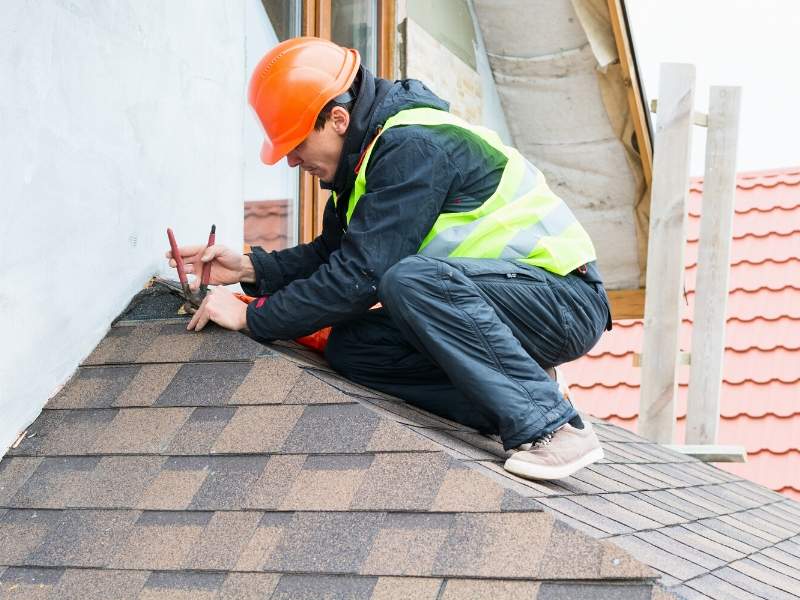If the harsh weather conditions of Northern Virginia takes its toll on your roof, it might be time for a replacement. There are roofing tips to help you with your Northern Virginia roofing. Moreover, these roofing tips help you get the most out of the money.
So, if you’re in the market for a new roof, take the time to check out these roofing tips for choosing the best roof for your home.
3 Roofing Tips to Get the Right Roof for Your Home

Set Your Project Budget
One important tactic in any home improvement project is the cost of the materials and installation. There are many roofing materials in the market and their installation prices vary widely. To make a sound decision, obtain quotes from reliable roofing companies. Also, research the services offered by remodeling companies such as WISA Solutions to get the best bang for your buck.
Other things that affect the costs of roofing are the shape of the house, its area, and the materials required. The prices of these materials also vary so, consider this while also keeping in mind the durability that the material offers.
How to Select The Right Material
Not surprisingly, you have to shop for the best materials for your particular home. Here are some factors to consider when choosing the best roofing material for your home.
⎆ Weather
Your roof is the part of your home that helps protect you from the harsh elements of nature, so it’s important to choose a material that can provide you with reliable protection. It should be able to endure the harsh sun, hold up against the wind, and withstand rain and snow. Depending on your weather conditions and the shape of your home’s roof, some materials may prove to be better than others.
⎆ Slope
Your roof’s slope and structure are important considerations in choosing a roofing material. The word “slope” defines as the roof’s rise for each foot of horizontal run. For instance, your roof rises 4 inches for every foot of horizontal run, so it has a slope of 4-in-12.
Many tiles and shingles are on 4-in-12 and steeper slopes. For steep slopes, tiles, clay, wood, or slate are your best options.
For low-sloped homes, choose asphalt and metal roofing material. Homes with roofs with low-slopes must add toppings with seamless materials such as sprayed polyurethane foam to prevent leaks when water pools on the surface.
⎆ Appearance
Your curb appeal is important and a roof greatly affects your home’s appearance. So, choose the best material, color, and texture to match your home’s exterior style and finish.
To choose the roofing material for your home, consider its architectural style. Find a material that’s consistent with your home’s design. If you’re looking for a replacement, however, that doesn’t mean you can’t choose a new material. Today, modern roofing products are in use that looks like original roofs. For example, some metal and concrete roofs look like wood or tile, while fiber cement roofing appears like slate or wood.
Color is also an important consideration. If you live in a place with a hot climate, choose light-colored material since it reflects more heat in comparison to a dark-colored roof. If it’s cold in your location most of the year, consider getting roofing material in a darker color.
Material Durability And Longevity

The least-expensive material in the market isn’t always the best choice, especially when it comes to home improvement. Although it’s understandable that you want to save money, the quality and longevity of your roofing material is a priority.
Choosing substandard materials for your roofing replacement causes greater costs, as it may need replacement sooner. Therefore, it’s worth it to pay more for high quality and durable roofing materials.
Determine The Roofing’s Fire Rating
The fire rating of roofing materials includes Class A, Class B, and Class C. Some materials such as untreated wooden shingles don’t have a rating since they do not qualify for one. Please note that roofing materials without ratings are not for use if a fire is an environmental hazard in your location.
Here are what the fire ratings mean:
- Class A – the material can withstand severe exposure to fire.
- Class B – roofing should not catch fire in moderate exposure.
- Class C – can withstand minimal exposure to fire.
Roofing Tips Synopses
Whether it’s time to replace your roof or you’re choosing a roofing material for your new home, it’s important to choose the one that’s best for your house. To do this, you need to consider your budget, the appropriate material, and the roof’s durability and fire rating.
Factors Affecting the Cost of Bespoke Furniture
Your Ultimate Checklist When Moving to a Newly Built Home





